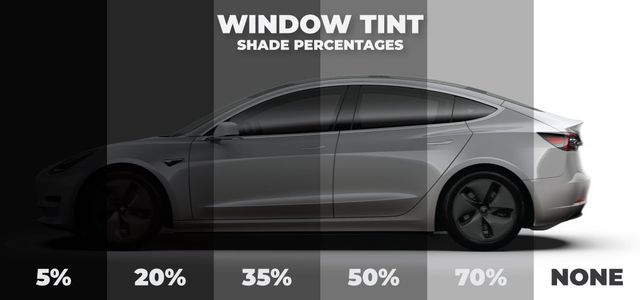Car Window Tinting: Improve Your Automobile's Style and Privacy
Car Window Tinting: Improve Your Automobile's Style and Privacy
Blog Article
Home Window Tinting Regulations and Standards: What You Need to Know Before Tinting Your Cars And Truck
Prior to continuing with window tinting for your vehicle, it is crucial to familiarize on your own with the varied legislations and guidelines that regulate this method across different states. These laws determine the permitted levels of color darkness, usually gauged by noticeable light transmission (VLT) percentages, and consist of specific stipulations for front windshields aimed at guaranteeing roadway safety.
Review of Home Window Tinting Regulations
Window tinting regulations are regularly based on variation across various territories, showing local guidelines and security factors to consider. These laws dictate the permitted levels of color darkness and reflectiveness on lorry home windows, guaranteeing that chauffeurs maintain sufficient exposure while likewise securing versus hazardous UV rays and warmth.
Many regulations categorize home window tinting based on the Visible Light Transmission (VLT) percent, which shows the amount of light that can go through the window. Typically, lower VLT portions signify darker tints. Regulations typically separate in between the front, side, and rear windows, with more stringent limitations applied to the front windscreen to boost safety for both the chauffeur and other road customers.
In addition, some jurisdictions enforce restrictions on the reflectivity of the color, avoiding too much glow that can impair exposure. Exemptions to these legislations might exist for individuals with certain clinical conditions needing additional sunlight protection. Compliance with home window tinting guidelines is critical, as offenses can cause penalties, necessary elimination of the tint, and prospective boosts in insurance coverage premiums. It is necessary for car proprietors to familiarize themselves with regional regulations prior to proceeding with window tinting installations.
State-by-State Tint Regulations
Comprehending the specific window tinting laws in each state is vital for lorry proprietors seeking to follow the legislation. Each state in the united state has actually developed its own set of guidelines regulating home window tinting, which can vary dramatically. These guidelines often determine the permitted levels of tint darkness, the sorts of windows that can be tinted, and any kind of clinical exemptions that might apply.
As an example, states like The golden state have rigorous restrictions on tint darkness for front home windows, while others, such as New Mexico, might permit darker colors. In addition, specific states mandate particular presence portions for different home windows, consisting of the windshield, front side windows, and rear windows. It is vital for car proprietors to familiarize themselves with their state's laws to avoid possible penalties or charges.
Furthermore, some states might call for a certification sticker label to be positioned on tinted windows, showing compliance with state regulations. Failure to abide by these laws not only risks lawful repercussions however can likewise impact safety and security and exposure while driving. For that reason, vehicle proprietors must conduct thorough research or consult neighborhood authorities to guarantee full understanding and conformity with state-by-state color laws.
Allowed Tint Levels and Kinds
Numerous lorry proprietors may be shocked to find out that allowed tint degrees and kinds differ commonly across various states. Each state has actually established its very own guidelines pertaining to the allowable darkness and reflectivity of home window color, usually determined by Visible Light Transmission (VLT) percents. VLT refers to the quantity of light that can go through the tinted home windows; hence, a lower portion shows a darker color.

Furthermore, the sorts of tint materials enabled can differ, with some states forbiding metal or mirror-like finishes. It is vital for Learn More Here automobile owners to familiarize themselves with their state's specific laws to ensure compliance. Non-compliance can cause penalties, mandatory removal of the color, or various other legal repercussions, making it crucial to comprehend these policies before proceeding with installment.
Medical Exemptions for Tinting
While not all states offer allocations for clinical exemptions regarding window tinting, those that do recognize the necessity for particular individuals to enhance presence and comfort as a result of clinical problems. Various medical conditions, such as lupus, skin cancer, and specific eye conditions, can provide individuals especially conscious sunshine. These individuals might need darker colors to shield themselves from damaging UV rays and glare.

It is essential to keep in mind that even with a clinical exception, there may still be limitations on the degree of color enabled. Conformity with state regulations makes sure that individuals are both secured and within legal limitations. Those considering medical exemptions should call their regional Division of Motor Vehicles or equivalent authority to recognize the demands and procedures necessary to obtain an exemption properly.
Fines for Non-Compliance
Stopping working to adhere to home window tinting laws can cause significant charges, which differ by state. Police are encouraged to release citations for vehicles that do not adhere to the defined tinting laws. These charges generally include penalties, which can vary from modest amounts to several hundred bucks, relying on the seriousness of the infraction and the state in question.
In some jurisdictions, duplicated offenses might result in rising penalties or added fines, such as required court looks. Additionally, non-compliance may demand the removal of illegal tinting, typically at the proprietor's cost. In extreme instances, habitual wrongdoers may face suspension of their vehicle registration till conformity is accomplished.
Furthermore, insurance coverage implications might arise from getting several citations for home window tint infractions. Insurance providers might see such infractions as an indication of riskier actions, possibly resulting in raised costs or difficulty in coverage.
To stay clear of these penalties, it is essential for automobile owners to familiarize themselves with their regional window tinting regulations and make sure that their automobile complies (Window Tinting). This positive method not only stays clear of lawful ramifications yet likewise promotes road safety
Final Thought

Many policies identify home window tinting based on the Visible Light Transmission (VLT) portion, which shows the anchor amount of click here to find out more light that can pass through the home window. Conformity with home window tinting guidelines is critical, as infractions can result in fines, mandatory removal of the color, and possible increases in insurance premiums.Recognizing the specific home window tinting laws in each state is vital for automobile proprietors seeking to comply with the legislation. These guidelines frequently determine the permitted levels of color darkness, the types of home windows that can be tinted, and any medical exemptions that might apply.
For circumstances, states like California have strict constraints on color darkness for front windows, while others, such as New Mexico, may enable darker colors.
Report this page